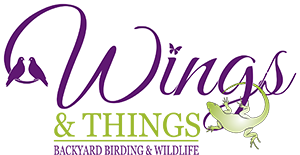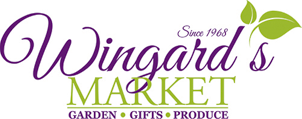Types of Habitats
Live in harmony with your backyard! What is your habitat?
What is your habitat?
Suburbia
- You can tell if you’re in Suburbia if you walk out in your front yard and look in 360 degrees and see houses in each direction. Local vegetation consists of nonnative horticultural plants that look aesthetically pleasing. Birds and Wildlife typically seen are: Cardinals, House Finches, Carolina Wrens, American Robins, Red-bellied Woodpeckers, Gray Squirrels, Raccoons, Opossums, Green Anoles, Five-lined Skinks, Broad-headed Skinks, Garter Snakes, Brown Snakes, Southern Toads, & Green Tree Frogs.
Mixed Forest
- When most people refer to having “Woods” by their house they are usually referring to a “Mixed Forest,” comprised primarily of Oak Trees, Maple Trees, and Pine Trees, with shrubs and weedy plants growing on the forest floor. Birds and Wildlife that make their home here include: Carolina Chickadees, White-breasted Nuthatches, Brown Thrashers, Pileated Woodpeckers, Eastern Screech Owls, Red-tailed Hawks, Whitetail Deer, Cottontail Rabbits, Gray Foxes, Box Turtles, Green Anoles, Glass Lizards, Black Rat Snakes, Rough Green Snakes, Copperheads, Green Treefrogs, Cope’s Gray Tree Frogs, and Squirrel Tree Frogs.
Pine Forest
- Pine Forests aren’t as common as they used to be, but still occur around the Midlands. They are comprised of primarily pine trees with a very open forest floor with grasses as the ground cover. Birds and Wildlife that can be seen in this habitat include: Brown-headed Nuthatches, Pine Warblers, Eastern Towhees, Northern Flickers, Bobwhite Quail, Whitetail Deer, Striped Skunks, Fox Squirrels, Coachwhips, Pine Snakes, Timber Rattlesnakes, Six-lined Racerunners, Southern Toads, and Spadefoot Toads.
Grassland/Pasture
- In our area, most Grasslands are Cattle Pastures, but some wild ones do exist. You know you’re in one when you look in 360 degrees and the area is flat and some sort of grass is the groundcover. Birds and Wildlife that can be seen in this habitat include: Goldfinches, Savannah Sparrows, Purple Martins, Loggerhead Shrikes, Brown-headed Cowbirds, Mourning Doves, Whitetail Deer, Cottontail Rabbits, Red Fox, Fence Lizards, Garter Snakes, Brown Snakes, and Southern Toads.
River
- The 3 main rivers in our area are the Saluda, Broad, and Congaree. Rivers provide crucial habitat for a diverse array of Birds and Wildlife, and include: Cardinals, Carolina Wrens, Prothonotary Warblers, Eastern Kingbirds, Great Blue Herons, Muskrats, Beavers, River Otters, Whitetail Deer, Alligators, Slider Turtles, River Cooters, Snapping Turtles, Banded Water Snakes, Red-bellied Water Snakes, Water Moccasins, Bull Frogs, and Leopard Frogs.
Marsh/Pond/Lake
- A Marsh is a wetland where the native weedy plants dominate the body of water. A Pond is a wetland consisting of still water over a small expanse. A Lake is a wetland that consists of a large expanse of still water. Each one of these habitats attracts a large diversity of Birds and Wildlife to your yard, and include: Cardinals, Red-winged Blackbirds, Common Grackles, Belted Kingfishers, Mallard Ducks, Great Blue Herons, Ospreys, Bald Eagles, Muskrats, Beavers, River Otters, Whitetail Deer, Alligators, Slider Turtles, River Cooters, Snapping Turtles, Banded Water Snakes, Red-bellied Water Snakes, Water Moccasins, Bull Frogs, and Leopard Frogs.
Swamp
- A swamp is a forested wetland where the water is still or slow moving. As with other wetlands, many birds and wildlife depend on this environment for habitat, including: Cardinals, Blue Jays, Carolina Chickadees, Prothonotary Warblers, Pileated Woodpeckers, Barred Owls, Muskrats, Beavers, River Otters, Whitetail Deer, Alligators, Slider Turtles, River Cooters, Snapping Turtles, Banded Water Snakes, Red-bellied Water Snakes, Water Moccasins, Bull Frogs, and Leopard Frogs.
Proud to be a Conservation Partner for Carolina Wildlife Center.
Backyard birding and wildlife watching are becoming some of the most relaxing, fulfilling and educational hobbies that anyone can enjoy, regardless of age. With nature as a common ground, Americans are ‘nesting’, creating entertainment and interest in their own back yards instead of expensive entertainment outside of the home.


